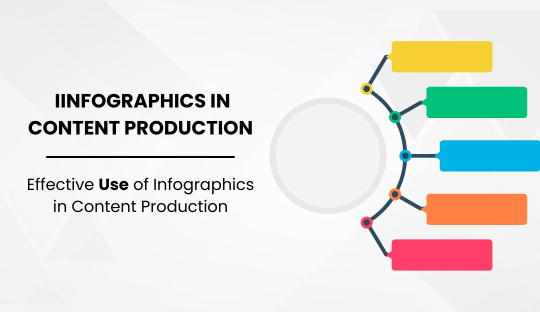
Effective Use of Infographics in Content Production
In the realm of digital content, infographics have emerged as a powerful tool for enhancing visual content and improving SEO content production. For creative brand companies like Flykez CO in Italy, leveraging infographics can significantly boost engagement, communicate complex information succinctly, and align with current content trends for 2024. This article explores the effective use of infographics in content production, offering practical tips and strategies.
The Power of Infographics
Infographics combine visual elements with concise text to present information in an easily digestible format. They are particularly effective for:
- Simplifying Complex Data: Infographics break down complex data into visually appealing and understandable chunks, making it easier for audiences to grasp key points.
- Boosting Engagement: Visual content is more likely to be shared on social media, increasing your reach and engagement.
- Enhancing SEO: Infographics can improve your SEO content production by attracting backlinks and driving more traffic to your website.
- Improving Retention: People tend to remember visual information better than text alone, making infographics a valuable tool for content marketing.
Designing Effective Infographics
To maximize the impact of infographics, consider the following best practices: Also Read About Harnessing the Power of Podcasts in Your Content Strategy
1. Define Your Purpose
Before creating an infographic, determine its purpose. Are you explaining a process, presenting statistics, or summarizing research findings? Understanding the goal will guide the design and content.
2. Focus on Visual Hierarchy
Visual hierarchy is crucial in infographic design. Use size, color, and placement to highlight the most important information. Ensure that the flow of information guides the viewer through the content logically.
3. Keep It Simple
Avoid cluttering your infographic with too much information. Stick to essential points and use visuals to complement the text. Simplicity enhances readability and ensures your message is clear.
4. Use High-Quality Visuals
High-quality visuals are essential for professional-looking infographics. Use clear, high-resolution images, icons, and illustrations that align with your brand’s style.
5. Incorporate Branding
Ensure your infographics are consistent with your brand identity. Use your brand colors, fonts, and logo to create a cohesive look. This not only reinforces brand recognition but also adds a professional touch.
Integrating Infographics into Content Marketing
Integrating infographics into your content marketing strategy involves several steps:
1. Research and Plan
Start with thorough research to gather accurate data and information. Planning your infographic involves outlining the content and deciding on the layout. Tools like mind maps or storyboard sketches can help in this phase.
2. Use SEO Best Practices
To enhance SEO content production, incorporate keywords such as “Digital Content,” “Infographic Design,” and “Content Trends 2024” in the infographic’s title, description, and alt text. Optimize the file name and metadata to improve search engine visibility.
3. Promote on Multiple Channels
Promote your infographics across various channels, including your website, blog, social media, and email newsletters. Platforms like Pinterest and Instagram are particularly effective for visual content. Encourage sharing to increase reach and engagement.
4. Repurpose Infographic Content
Repurpose the content of your infographics into other formats such as blog posts, social media updates, and presentations. This maximizes the value of your content and ensures it reaches a broader audience.
Measuring the Impact
To assess the effectiveness of your infographics, track key metrics such as:
- Engagement Rates: Measure likes, shares, comments, and overall reach on social media platforms.
- Website Traffic: Use tools like Google Analytics to track how much traffic your infographics drive to your website.
- SEO Performance: Monitor keyword rankings and backlink growth to evaluate the SEO impact.
- Conversion Rates: Track leads and conversions generated from your infographics to measure their effectiveness in achieving business goals.
Conclusion
Infographics are a versatile and impactful tool in content production. For Flykez CO, integrating well-designed infographics can enhance visual content, improve SEO, and align with the latest content trends in 2024. By following best practices in design and promotion, and by measuring their impact, you can effectively leverage infographics to boost engagement and achieve your marketing objectives.
For more information on how Flykez CO can assist with infographic design and other digital marketing services, visit Flykez CO.
